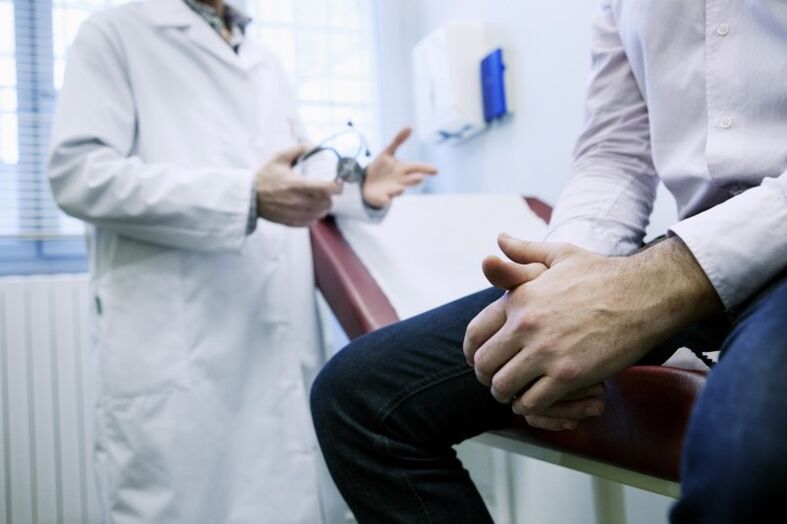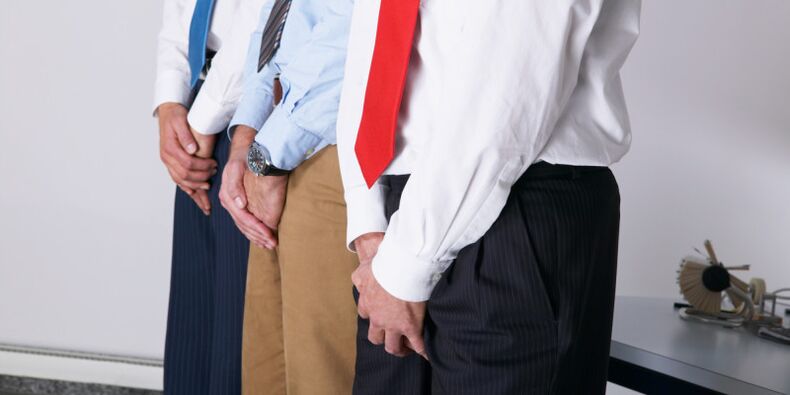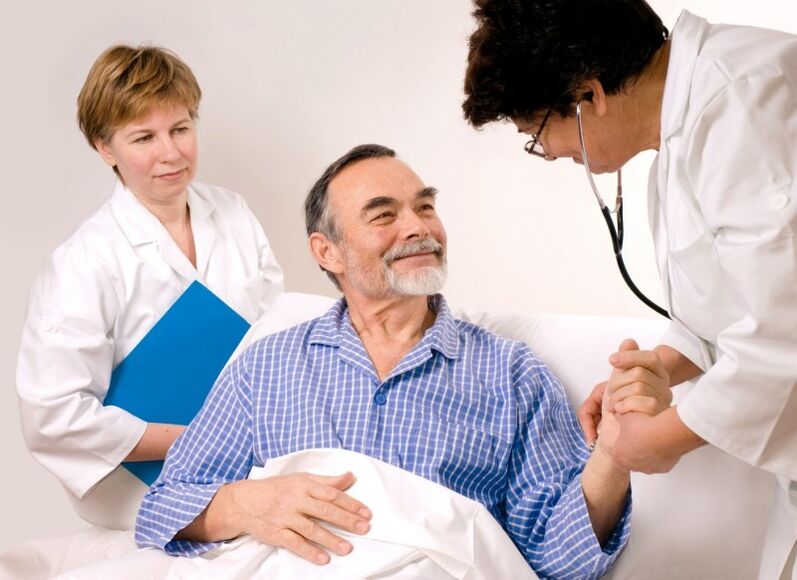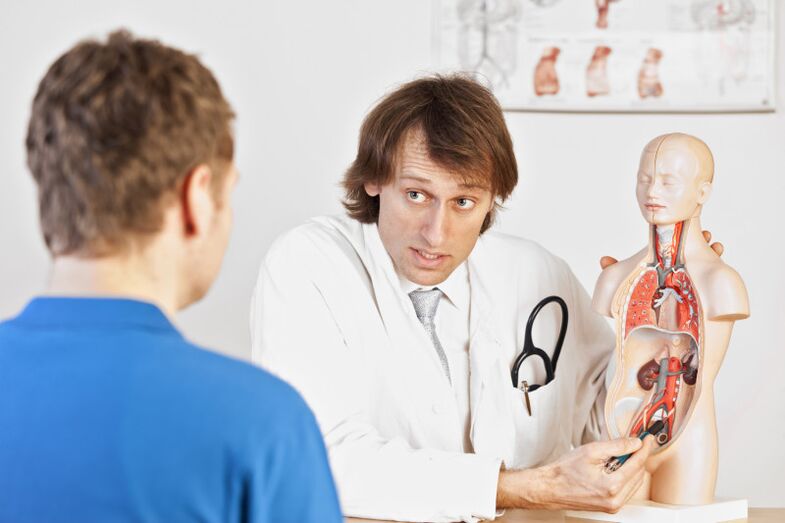
Prostatitis is a frightening disease of the male genital area, which often affects young men under the age of forty. Although her symptoms - decreased sexual desire, difficulty urinating, groin pain - are very painful, men are in no hurry to seek medical help.
And the reason for that is the insufficient amount of information about this disease, there are too many myths and prejudices about it.
However, the manifestations of prostatitis only get worse over time, so at the first signs of prostatitis, it is necessary to contact a qualified urologist immediately.
Causes of prostatitis
Prostatitis is an inflammation of the prostate. Doctors divide the acute phase of the disease and the chronic. If the first one is not treated, then the inflammation quickly becomes chronic and is full of numerous complications, such as impaired sexual function and even the development of a malignant prostate tumor.
What are the reasons for its emergence?
Here are just a few of them:
- Fully communicable diseases. Often, men are carriers of a certain infection, without even knowing it, because the disease is completely asymptomatic. However, this picture is very wrong. As soon as the immune system fails, for example, under the influence of a stressful situation, it gives impetus to the development of prostatitis. The most common causes of the disease are the herpes virus, fungi of the genus Candida, Escherichia coli and so on.
- Untreated bladder infections. In this case, the infection easily spreads to the nearby prostate.
- Stagnation of blood in the pelvic region. This can lead to a sedentary lifestyle, irregular sex life. In this case, there is so-called nonbacterial prostatitis.
- Regular hypothermia, stress, the presence of infectious foci, including carious teeth, in the body.
- Prostatitis can develop as a complication after severe infectious diseases - influenza, tonsillitis and others.
The main symptoms of prostatitis
The most common signs of this disease, regardless of the cause, include:
- reduction of potency;
- pain and difficulty urinating;
- pain of varying intensity in the groin and genital area.
Symptoms of acute bacterial prostatitis
As already mentioned, the first stage of bacterial prostatitis is acute, lasts no more than 3-5 days, after which it slowly turns into chronic.
It is very important not to miss the first symptoms of the disease:
- Pain in groin and scrotum;
- Sharp pain during urination;
- Penetrating pain after intercourse in the head of the penis;
- Worsening of erection, reduction of duration of sexual intercourse.

A few days after the appearance of the first symptoms, the pain subsides, and men get the deceptive impression that the threat has passed. However, this only means that prostatitis is slowly but surely becoming chronic.
Such a course of disease is characterized by:
- Alternating periods of remission and exacerbation of prostatitis;
- Difficulty urinating, frequent urges, a feeling of incomplete emptying of the bladder are associated with the above signs of the disease.
During the exacerbation of chronic bacterial prostatitis, patients suffer from the same symptoms as in the acute form.
Even seemingly harmless factors can cause it:
- hypothermia;
- cold;
- An erection that had no realization;
- Avitaminosis;
- Stress and overwork;
- Sedentary lifestyle;
- prison;
- Improper sex life;
- Smoking and alcohol abuse.
Symptoms of nonbacterial prostatitis
This disease is also called congestive prostatitis. This is the most dangerous and most common type of pathology. Its development is directly related to the way of life of modern man.
Medical researchers compare chronic congestive prostatitis in severity and frequency with dangerous diseases such as tuberculosis or cancer, because its neglected form is a direct path to prostate cancer.
This form of the disease can be said when the inflammation of the prostate is caused not by any microorganisms, but by other factors - long absence of sexual intercourse, sedentary lifestyle, regular stressful situations.
Such a conclusion can be reported from the results of a bacteriological study that shows the absence of pathogenic microorganisms.
The symptoms of this form of the disease are slightly different from the bacterial ones:
- Patients complain of periodic or persistent dull pain in the pelvis, lower abdomen, groin, and genitals;
- Sexual dysfunction and urination problems;
- Depressed mental state of the patient
Symptoms of chronic asymptomatic prostatitis

This is a latent form of the disease. As the name suggests, it is asymptomatic, ie there is an inflammatory process in the prostate, but it does not affect the patient's condition.
Some medical researchers tend to consider this form of pathology only as normal age-related changes in the prostate, which occur due to impaired blood flow to the organ.
This disease is often detected in patients quite by accident, for example, during abdominal surgery associated with a completely different diagnosis.
To avoid prostatitis, you need to know its causes.
Thus, the main measures to prevent inflammation of the prostate:
- Although the main measures to prevent prostatitis, as mentioned several times, are regular sexual activity, it is still worth avoiding casual sexual contact or it is imperative to use contraceptives. This measure is mandatory, because about 30% of cases of prostate inflammation are related to sexually transmitted diseases.Sex Alternative- Masturbation is also welcome with urologists, because no less than full-fledged sexual intercourse improves the blood supply to the prostate.
- Physical activity, active lifestyle. Physical education and sports are useful as a general strengthening measure, but it is worth focusing on exercises that improve blood circulation in the pelvic area. This includes running, skating, skiing, etc.
- Regular preventive examinations by a urologist or andrologist, at least once a year.
- Timely treatment of foci of infection in the body, for example, remediation of the oral cavity.
The diagnosis of prostatitis is complex and multiple

The diagnosis of prostatitis is primarily related to the identification of the cause of the disease, includes the following steps:
- Of great importance for clarifying the picture of the disease is the examination of the patient, who must describe in detail their complaints - the localization of certain sensations, their duration, the events associated with the manifestations, after which they began. Also, when making an appointment, the doctor carefully reviews the patient's medical documentation for previously transmitted diseases, tests and examinations. The urologist clarifies the patient's data on sexual life, the presence of sexually transmitted diseases.
- Examination of smears and scrapings from the urethra. The increased number of leukocytes in the swab and the presence of pathological microflora in the scraping will indicate the presence of infection.
- General urine analysis. It helps to recognize the presence of infection, its presence is indicated by an increased number of leukocytes (more than 5).
- Ejaculate analysis. It is performed to confirm the diagnosis of nonbacterial prostatitis.
- Prostate ultrasound. It allows you to see the picture of the disease in the most complete way. It is performed to clarify the diagnosis of both acute and chronic inflammation of the prostate, suspected cancer.
Pain and decreased potency - as the first signs of prostatitis
Most often, doctors are faced with an already advanced form of the disease, because most men either ignore the first alarming bells - groin pain and decreased libido, or the disease itself is asymptomatic for some time.
These are the characteristics of the male anatomy - blood circulation is difficult in the area of the prostate, it is a "nutrient medium" for the reproduction of pathogenic microorganisms, and a sedentary lifestyle significantly worsens this problem. Therefore, it becomes an obvious reason for the mass spread of prostatitis among truck drivers and office workers.
One way or another, up to 50% of the entire male population in the world has ever experienced certain symptoms of prostatitis. Therefore, it is important to know the first signs of the disease and seek medical help in a timely manner. After all, treating an advanced form of the disease is an expensive and time-consuming endeavor.
A treatment that restores the patient to full life

Of course, it is much easier to get rid of prostatitis in the early stages than from a neglected disease. However, the chronic form is most often faced by doctors, which usually requires long-term and complex treatment.
But in any case, you must first identify the root cause of the pathology - blood stagnation and (or) inflammation in the prostate.
Thus, the complex treatment of prostatitis includes:
- Inflammatory processes are treated with broad-spectrum antibiotics. Moreover, drugs are prescribed both in the form of tablets and in the form of rectal suppositories. Infusions of medicinal herbs (chamomile, calendula), which are given in the form of microenemas, help well in the complex.
- However, the treatment of prostatitis should not be limited to medication, but should be aimed at restoring blood circulation in the prostate area, and this includes a set of physiotherapy and therapeutic exercises. Such measures contribute to better absorption of antibacterial drugs, because they improve blood flow to the prostate. Doctors often prescribe for prostatitis: electrophoresis, laser therapy, magnetotherapy;
- Prostate massage. This procedure is useful and effective, but it should not be performed at home, without consulting a doctor, because there are many contraindications, including the acute phase of the disease.
In summary, we can say that the issue of treatment and prevention of prostatitis largely depends on the desire and activity of men themselves. Elementary morning exercises, regular preventive check-ups with a urologist, a balanced diet - that's the key to male strength and longevity!



























